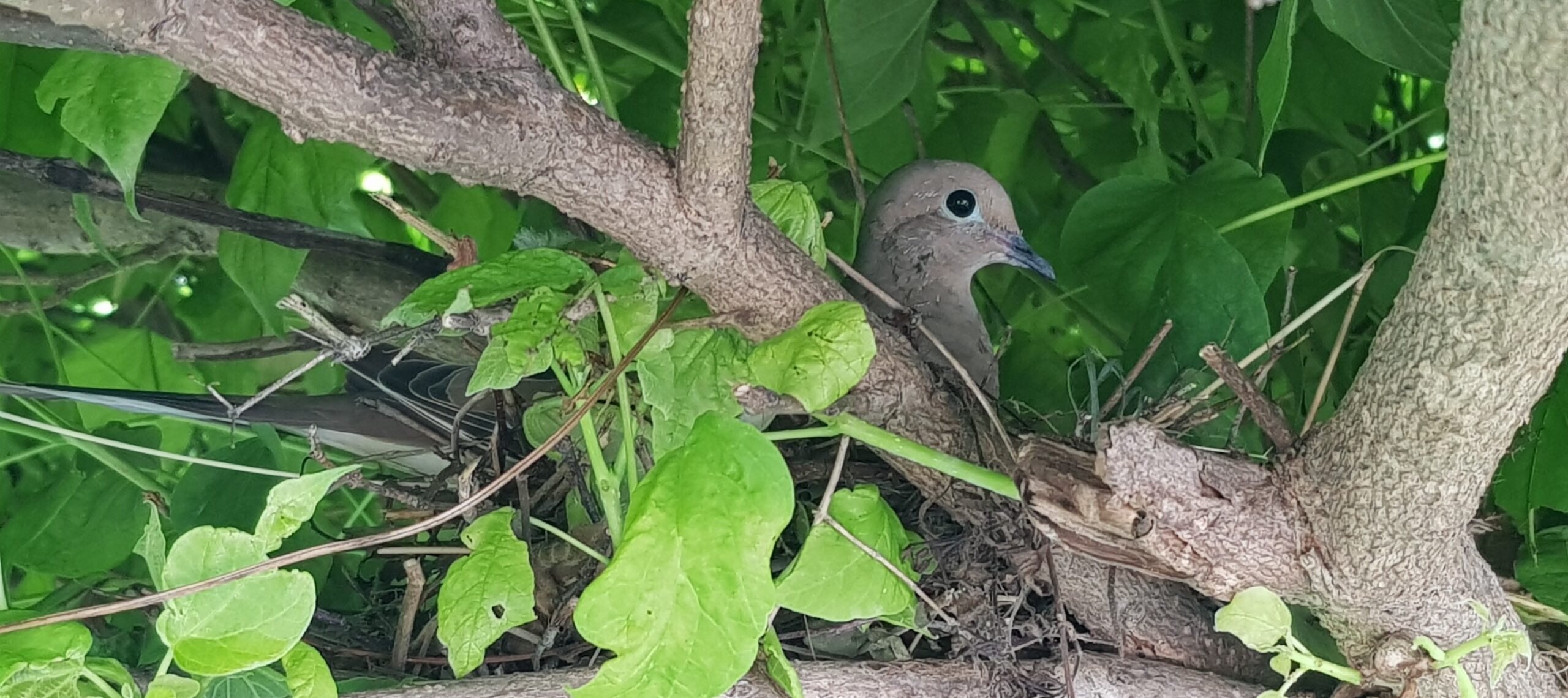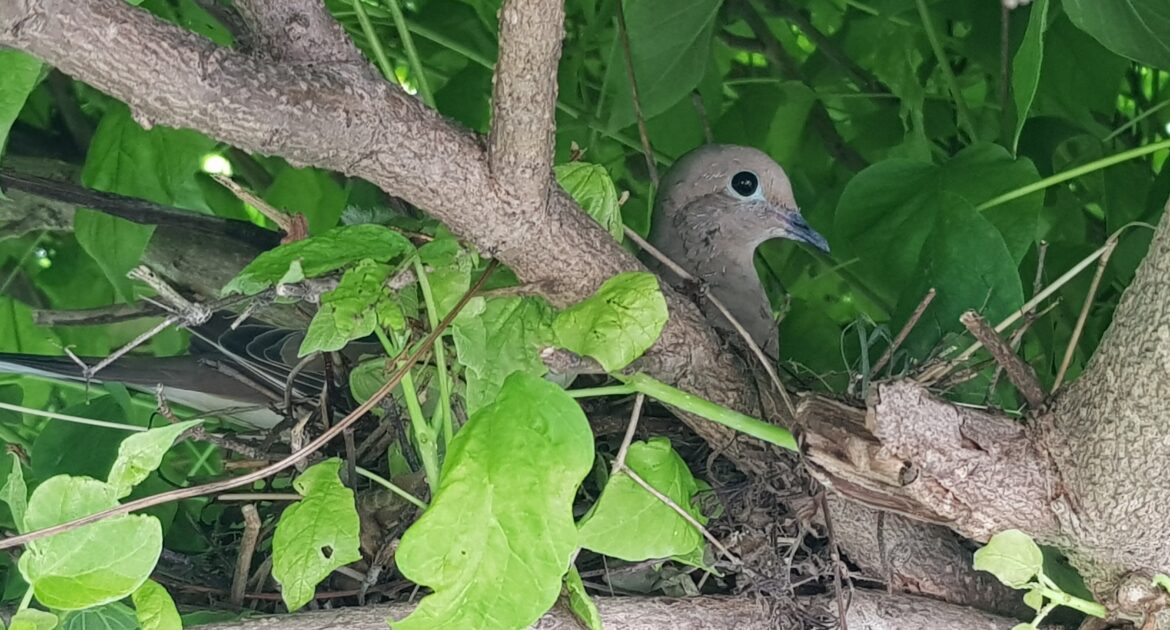Ever wondered how birds create their cozy little nests high in the trees or hidden in unexpected places?
Birds are like nature’s architects, cleverly gathering all sorts of materials to construct safe homes for their eggs and hatchlings. It’s fascinating to see the variety of bird nest materials they use, from natural items like twigs and moss to surprising human-made additions like string or bits of fabric.
The nesting habits of birds can vary, but the goal is always the same—to build a secure and comfortable place to raise their young. Birds in urban areas, like St. Paul, sometimes pick unusual nesting spots, such as vents, roofs, or attics, which is where professional help like St. Paul humane bird control comes in.
At Skedaddle Humane Wildlife Control, we help these animals find safer spaces while keeping your home bird-free. But before we get into how we help, let’s take a detailed look at what birds use to build their nests.
What Do Birds Use to Build a Nest?
Birds are resourceful and use an assortment of materials to construct their nests. Their choices often depend on their environment and the specific needs of their young. Here are some of the most common materials birds gather for their nests:
- Twigs and Sticks: Twigs are like the backbone of many nests. Birds weave them together to create a strong outer shell that supports and holds everything in place. Smaller birds may use tiny sticks, while larger ones, like crows or hawks, opt for sturdier branches for added stability.
- Grass, Leaves, and Weeds: After creating the frame, birds line their nests with softer layers of grass and leaves. These materials help cushion the eggs and keep the nest insulated. Plants like dry weeds are especially popular during the early nesting season.
- Feathers: What’s softer than feathers? Birds often use their own feathers or ones they find to pad the inside of their nests. Feathers are great for warmth and comfort, ensuring that baby birds stay cozy in any weather.
- Mud and Clay: Mud is a favorite nesting material for birds like robins and swallows. Acting like cement, it binds the nest together, adding durability and structure. Some birds even mix mud with other materials for extra strength.
- Moss and Lichen: Moss and lichen are popular with birds that need to camouflage their nests. These materials blend perfectly into natural surroundings, protecting eggs from predators. Moss also retains moisture, creating a humid and safe space for eggs to develop.
- Animal Fur and Human Hair: These animals take advantage of whatever soft, lightweight materials are available, including animal fur or even strands of human hair. Fur and hair help to insulate the nest, creating a soft, warm bed for hatchlings.
- Spider Silk: This might surprise you, but many smaller birds, such as hummingbirds, use spider silk. It’s not only super lightweight but also surprisingly strong, perfect for holding delicate nest pieces together.
- Man-Made Materials: Urban birds adapt to their environment by incorporating man-made items like string, yarn, and bits of plastic. While these materials can be helpful in building sturdy nests, they can sometimes pose risks to the animals, such as entanglement.
Where Do Birds Build Their Nests?
Birds choose their nesting places with care, usually prioritizing safety and proximity to food sources. Common spots include tree branches, shrubs, and the ground. Birds in populated areas like St. Paul often take advantage of man-made structures, creating nests in chimneys, vents, or even inside garages.
While these spots may seem harmless, a nest in the wrong location can lead to problems for both you and the animal. Nesting in your home can damage your property, create noise, and even block ventilation. That’s why St. Paul humane bird control services are essential when they get too close for comfort.
Why Do Specific Bird Nest Materials?
Each piece of a bird’s nest serves a purpose, and the materials chosen vary based on what’s available and the environment. For example, birds in colder areas prioritize insulation, so they might gather more feathers and moss. Birds in cities use what they can find, often incorporating scraps and artificial materials into their nests.
When it comes to picking the perfect materials, birds also consider the size and weight. They need to make sure they can carry their findings back to the nest without much trouble. You’ll often see them working tirelessly, flying back and forth with their chosen materials in beak or claws.
Fun Fact: Some birds, like magpies and jays, are collectors at heart and love shiny objects. It’s not uncommon to find pieces of aluminum foil, bottle caps, or even jewelry woven into their nests!
How Birds Build Their Nests: Step-by-Step
Birds don’t just throw their nests together—they follow a process that’s both instinctive and efficient. Here’s a step-by-step look at how these animals build their nests:
- Step 1 – Choosing the Location: Birds scout for a safe, sheltered spot that’s close to food and away from predators. Common locations include tree branches, shrubs, rooftops, and even vents or attics in urban areas.
- Step 2 – Gathering Materials: Birds collect materials like twigs, grass, feathers, and mud. Urban birds may also gather man-made items like string, yarn, or bits of plastic.
- Step 3 – Building the Base: Using twigs and sticks, birds create a sturdy framework to support the nest. Some species, like swallows, use mud to bind the base together.
- Step 4 – Adding Insulation: Birds line the nest with soft materials like moss, fur, or feathers to keep it warm and comfortable. This layer also cushions the eggs and protects them from damage.
- Step 5 – Final Touches: Birds may add camouflage, like moss or lichen, to help the nest blend into its surroundings. Some birds, like magpies, even decorate their nests with shiny objects!
This process shows just how much effort and care animals put into creating a safe home for their young. It’s a fascinating glimpse into their natural instincts and adaptability.
How We Help Manage Nesting Birds
While bird nests are beautiful and fascinating, they can become a problem when built in or near your home. That’s where we step in. Skedaddle Humane Wildlife Control in St. Paul specializes in safe, humane solutions for bird control.
Using our proven methods, we solve bird problems without harming the animals. For example, our one-way doors allow birds to leave your home but stop them from coming back inside. This gives the birds a chance to relocate to a more appropriate spot while your home is protected from further nesting.
We also take the time to inspect your property and seal potential entry points. This prevents future nesting attempts, ensuring the problem doesn’t happen again.
Take Back Your Space
Birds might be amazing builders, but your home isn’t the right place for their nests. If you’ve found bird nest materials in or around your property, contact Skedaddle Humane Wildlife Control in St. Paul. Our St. Paul humane bird control services are the safest and most effective way to address nesting issues.
Request an estimate today and discover how we can help protect your space while allowing animals to safely relocate!




